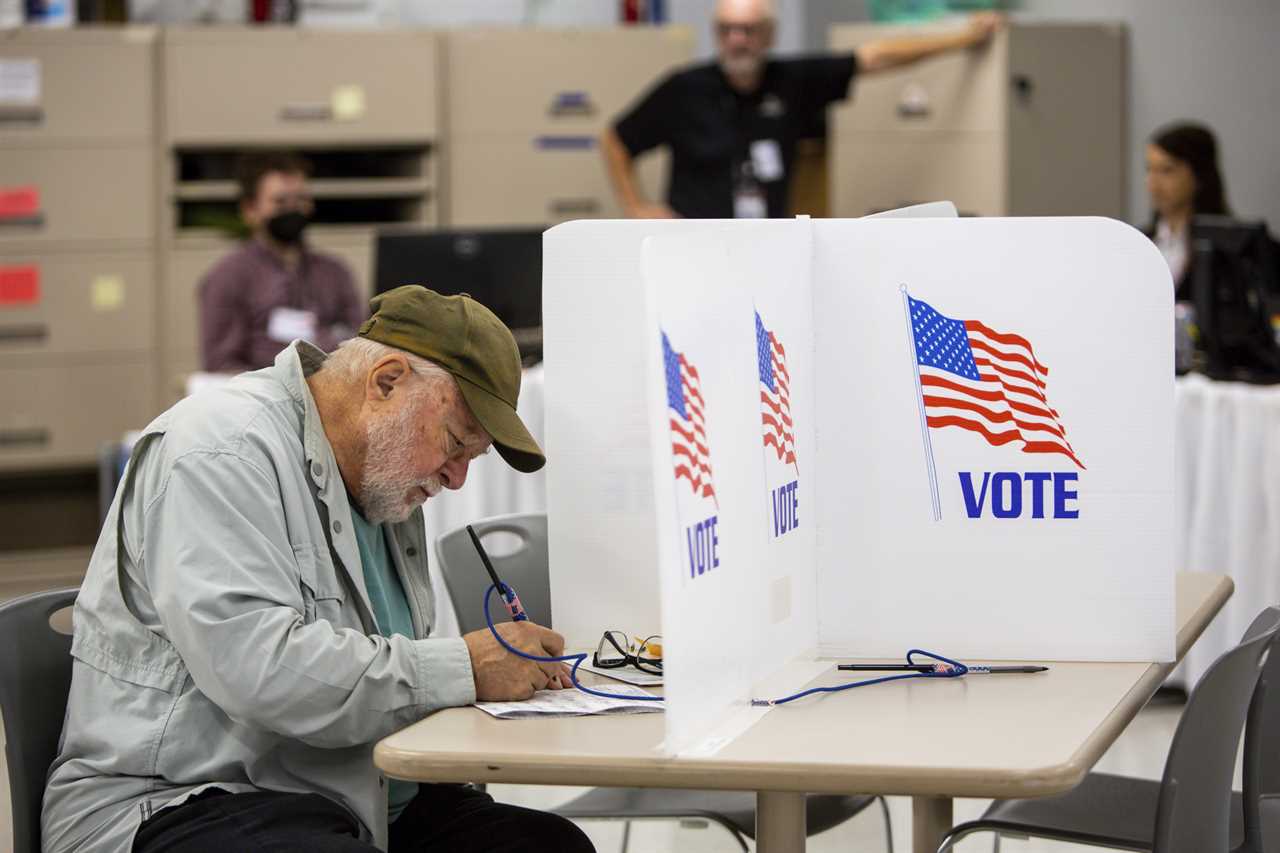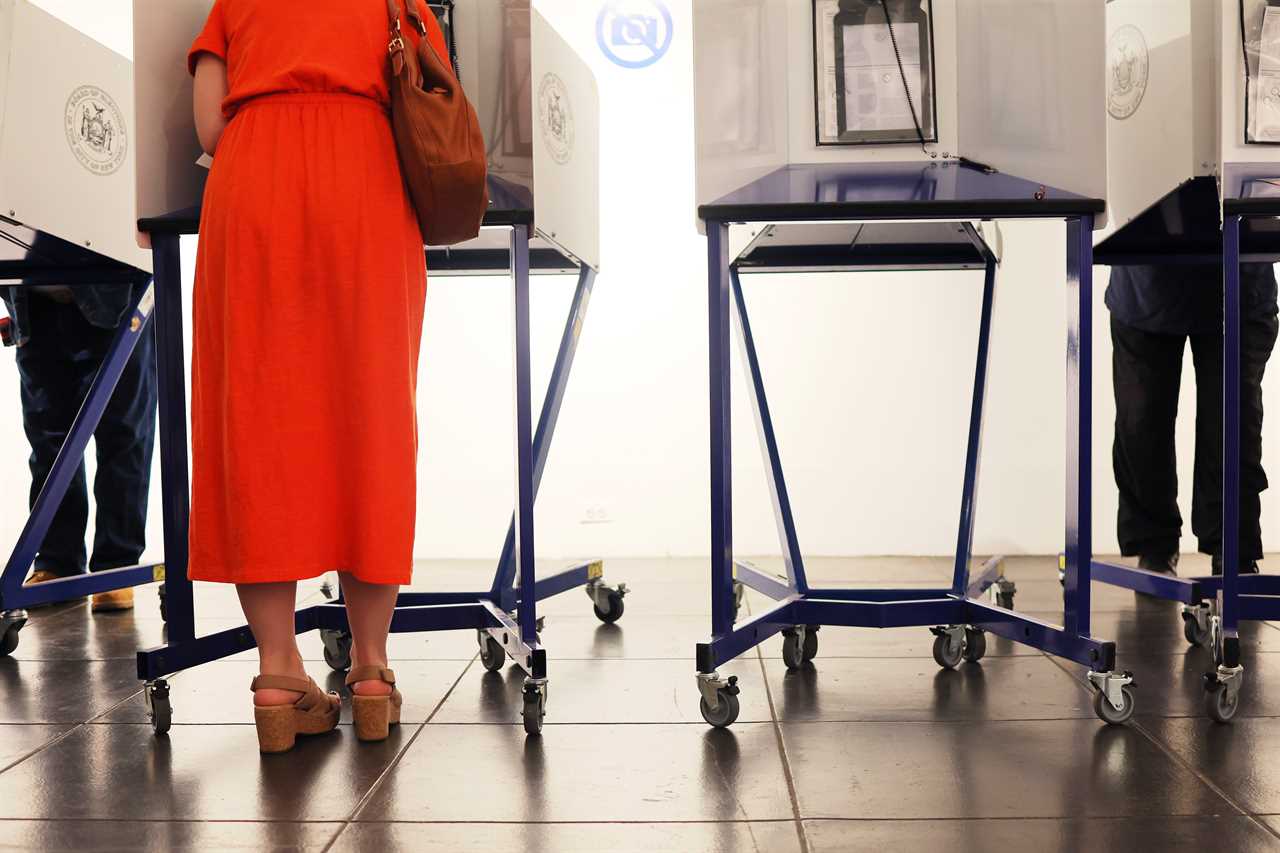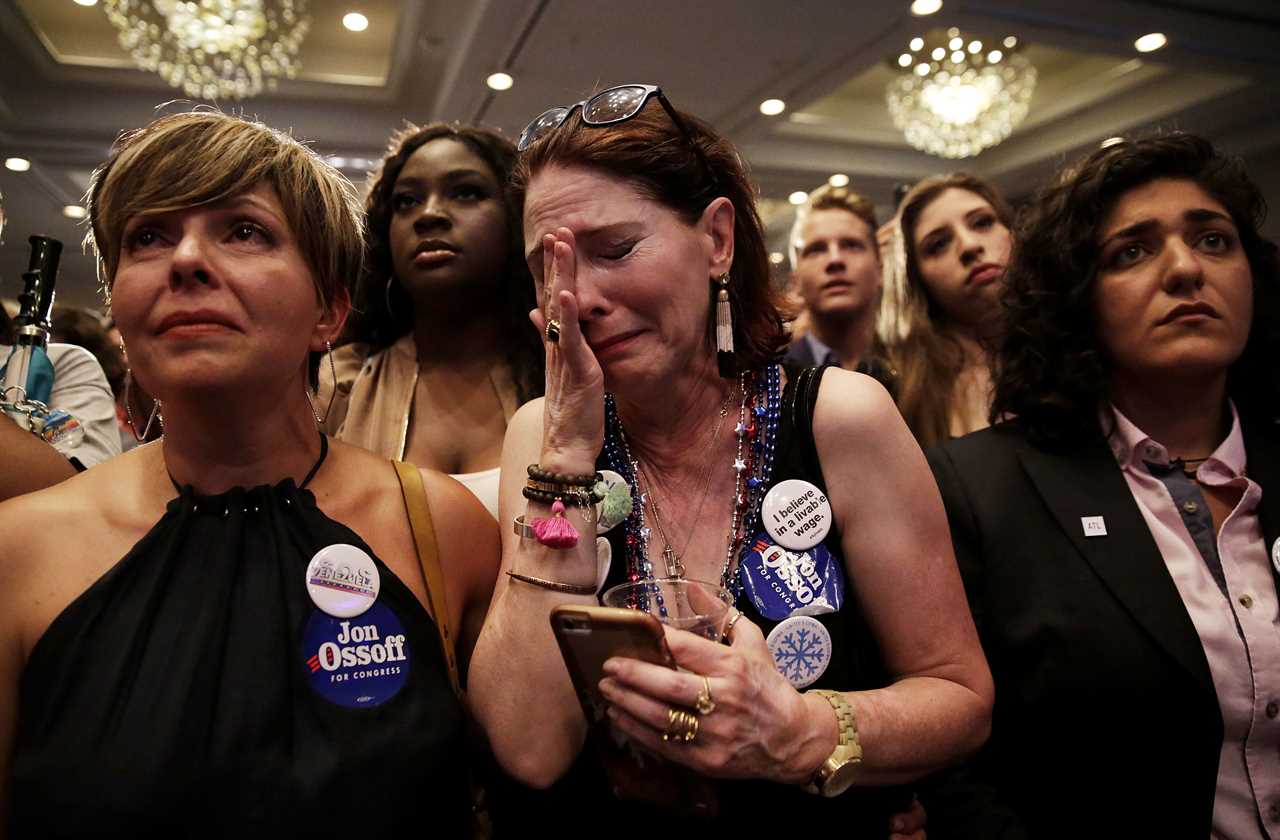
The Democratic Party’s newest star has an unlikely group to thank for his upset victory: rural voters.
Rep. Pat Ryan prevailed in a close race over his Republican opponent in an August special election in upstate New York in part because rural voters came out to the polls at lower rates than voters in more populated places in his bellwether congressional district.
The race in New York’s 19th District wasn’t unique. A POLITICO analysis of turnout data before and after Roe v. Wade was struck down in June shows that voters in rural counties were less motivated to cast ballots than those in more Democratic-leaning suburbs and cities after the Supreme Court decision. Though special elections are not a crystal ball, that could spell potential trouble for the GOP if the trend continues to the midterms in November, because rural voters, who overwhelmingly supported former President Donald Trump, are a key constituency for Republican candidates.
“Republicans are not as energized as they want or expected, and Democrats are very energized right now,” said Chris Walsh, Ryan’s campaign manager.
In four congressional special elections that have been held since June to fill vacant House seats — in Nebraska, Minnesota and New York — the portion of registered voters who cast ballots averaged 27 percent in suburban and urban counties, compared to 22 percent in rural counties, according to the analysis. Ahead of the Dobbs v. Jackson Women’s Health Organization decision that overturned Roe, those three groups had turnout numbers similar to each other.
Not coincidentally, in each of the contests that saw lower rural turnout, Democratic candidates overperformed compared to President Joe Biden’s 2020 results. Democrats’ higher turnout numbers have given the party hope that voter anger over the elimination of abortion rights would turn an anticipated red wave in the midterms into more a ripple.
“The suburban voters who Republicans thought were just anti-Trump are now kind of coming to realize they’re anti-Republican,” Walsh said. “With the Dobbs decision, it really fired them up that this is still an existential fight for their lives.”
The GOP is still the odds-on favorite to win a majority in the House, and inflation and dissatisfaction with Biden continue to be a drag on every Democrat running for office. Republicans said the recent special elections had distinct circumstances that they believed benefited Democrats — for instance, New York’s special election was held on the same day as a handful of contested Democratic primaries.
“Democrats played politics, they knew having competitive primaries in [Ryan’s district] would boost turnout for the special election, and it would create this false narrative that the election was a referendum on Dobbs,” said Will Dawson, campaign manager for Marc Molinaro, Ryan’s Republican opponent in August. “The midterm elections are and always have been a referendum on the White House.”
There are plenty of examples over the years of special elections that did not prove to be predictive of November’s results, and the races only reflect a small share of the electorate. But unusually high turnout in special congressional elections in 2017 and 2018 also foretold some of the surge in Democratic voters coming out to the polls for the 2018 midterms.
Celinda Lake, a Democratic pollster for Biden’s 2020 campaign, said rural voters may have felt complacent after the conservative movement’s decades-long effort to strike down Roe v. Wade was successful.
“A lot of rural voters, they’re more conservative religiously and they were very mobilized by abortion and now they think they’ve won,” she said. “Whenever you see a kind of falling-off of pro-life voters because they’re less engaged, you’re going to see that particularly in rural areas.”

Steve Bullock, the former Democratic governor of Montana and co-chair of the liberal super PAC American Bridge 21st Century, offered an alternative theory about the recent special election results: The end of abortion rights is actually turning off some rural voters, he said.
“Unfortunately, the Republicans have been doing a lot better in rural areas over these last few cycles. And they finally kind of caught the car bumper. Urban and rural folks didn’t necessarily think that Roe would be overturned or they’d work on a nationwide abortion ban,” said Bullock. “I think it’s suppressing some of the Republican interest in rural areas.”
He added that “in rural areas where access to affordable and quality health care is already challenged, when you turn around and say that you’ll have no reproductive health care in many states, I think that’s in part why we’re seeing what we’re seeing.”
This cycle’s special congressional elections got off to a typical start. In 2021 and the first half of 2022, turnout in the races was low in rural, suburban and urban areas, measuring 18 percent, 19 percent and 20 percent, respectively, according to a POLITICO analysis of elections across Texas, Florida, Louisiana, New Mexico and Ohio. That likely reflected, in part, the lack of interest in contests so far in advance of the midterms. Most of the elections over that period were also not in swing districts.
After the Supreme Court’s Dobbs v. Jackson decision, however, voters came out in higher numbers. That was true across the board, but the jump was the largest in suburban and especially urban counties, where turnout rose 10 percentage points. (POLITICO’s analysis excluded one special election, Alaska’s at-large district, because it used a ranked-choice voting system and the state’s geography does not correlate with the rural-urban divide seen in many other states.)
Still, even post-Dobbs, turnout this year has not matched what Democrats saw ahead of the 2018 midterms when they flipped the House. For example, 58 percent of voters that year cast a ballot in the expensive special election in Georgia’s 6th Congressional District where Democrat Jon Ossoff narrowly lost to Republican Karen Handel. No special election this year has neared that level of participation.

At least some in the GOP are uneasy about the flagging rural participation in recent contests.
Ryan Girdusky, a Republican political consultant, is concerned enough about the low rural turnout numbers in this year’s special elections that he can rattle them off by memory.
He blamed the results on messaging by the GOP that didn’t appeal to rural voters. Trump’s success in exciting those voters, he said, showed that they are motivated by issues such as crime, immigration, homelessness and education. He pointed to Molinaro’s TV commercials in the New York race that tied crime to Democrats as an example of what not to do.
“They were horrible. And I like Marc Molinaro a lot. But the ad was like the word ‘crime’ across the TV screen,” Girdusky said. “That doesn’t exactly inspire anxiety, fear, motivation, anger, anything. ”In recent weeks, though, Girdusky said the picture has improved somewhat, with more aggressive crime ads leading to tightening polls in Senate races.
Interestingly, few strategists in either party said that rural voters had dropped off because Trump isn’t on the ticket this year. Though he isn’t running, they pointed out, the former president has fully immersed himself in the midterms, endorsing candidates and holding rallies in major battleground states. He has also been a constant fixture in the news because of his legal troubles.
Like many others in the GOP, Michael McAdams, spokesman for the National Republican Congressional Committee, dismissed the post-Dobbs special election results, saying the races are “rarely predictive of what’s going to happen in generals.”
McAdams also said rural voters have more than enough reasons to come to the polls this November.
“You look at gas prices, that hurts rural voters the most,” he said. “You look at what’s going on with inflation, rural voters tend to be less affluent, and inflation impacts people making less than $100,000 far more than people who make over $100,000.”
The party out of power is virtually always more motivated in midterm elections. And after Democrats enjoyed a summertime high in which they notched legislative victories and watched as gas prices dropped, there are some signs that the political winds are blowing in the GOP’s direction again.
For instance, 60 percent of Americans said inflation is getting worse in a September poll by Yahoo News/YouGov, compared to 51 percent in mid-August. Nearly three-quarters of U.S. adults in the survey said inflation is a very important issue, while just over half who said the same thing about abortion.
John Couvillon, a pollster who typically works for Republicans, argued that a better gauge of party enthusiasm than special elections is primary turnout. According to his findings, 52 percent of voters in this year’s primaries participated in GOP races, compared to 48 percent who cast ballots in Democratic contests.
The gap between rural and urban turnout was also not as apparent this cycle in primaries in states such as Pennsylvania, which took place before the Dobbs decision, according to POLITICO’s analysis.
One especially good measure of voter mood ahead of November, Couvillon said, is Washington State’s all-party primary, which was held in early August. That’s because it’s a kind of a test-run of the general election, and swings in the primary have usually aligned with the fall results in the last decade.
Democrats performed relatively well in the top-two primary, which took place after Dobbs. But in a cycle that has often sent wildly different signals about what to expect this fall, Washington cast another one: There were no major differences in turnout between rural areas and bigger counties there.
“Even though the special elections are giving the Democrats psychologically a little bit of a lift, to me it’s not the same test environment as, say, an all-party primary in Washington,” said Couvillon.
----------------------------------------
By: Holly Otterbein and Jessica Piper
Title: Weak rural turnout could hurt GOP in November
Sourced From: www.politico.com/news/2022/10/03/weak-rural-turnout-gop-00059876
Published Date: Mon, 03 Oct 2022 03:30:00 EST






